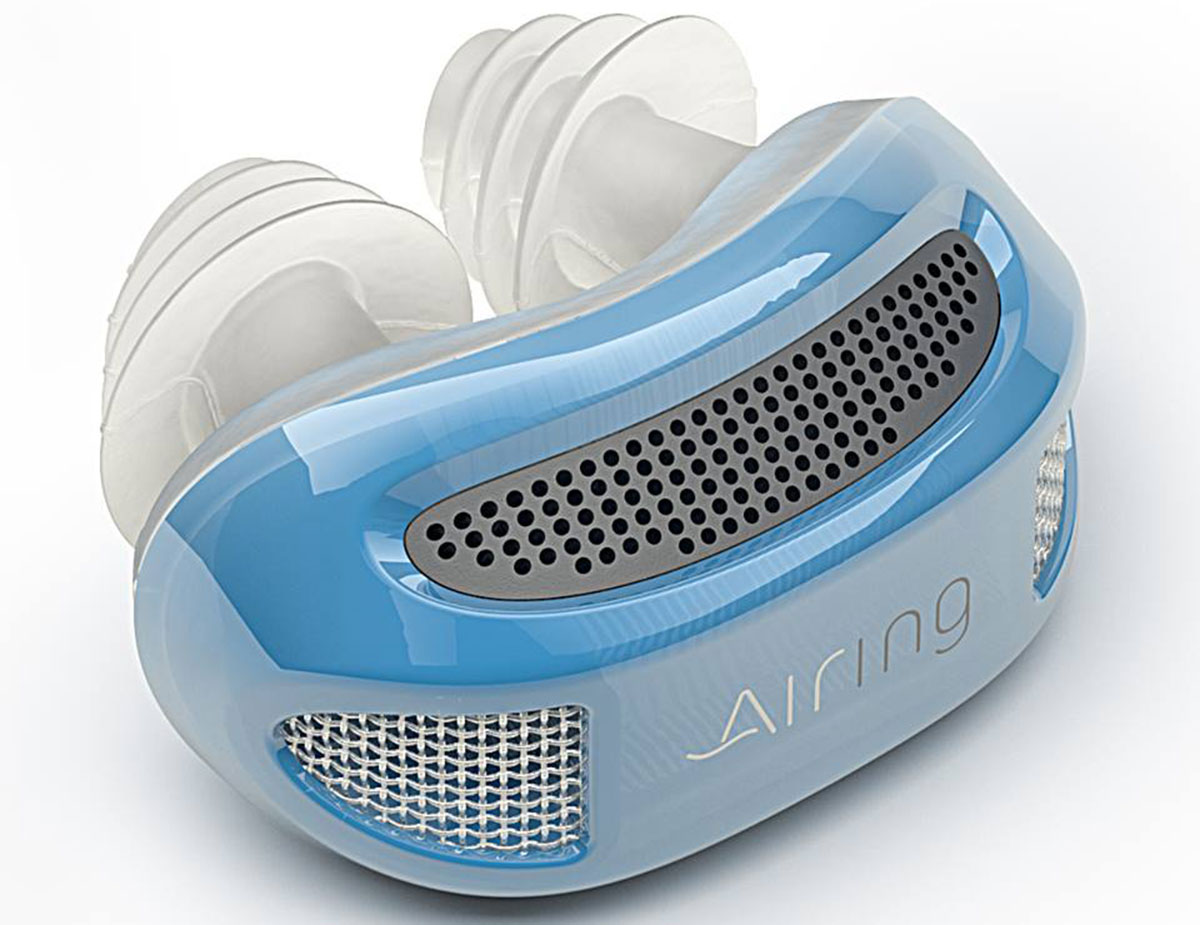A Local Inventor Is Developing A New Device to Treat Sleep Apnea

the device is designed to fit comfortably in the nose, and features hundreds of micro-blowers that provide the necessary air flow and pressure. Image is magnified. The device is smaller than your palm. photo provided to bostonmagazine.com.
When Boston-based inventor Stephen Marsh saw a photo of his brother, David, hooked up to a continuous-positive-airway-pressure (CPAP) machine—a device that treats the symptoms of obstructive sleep apnea—he was terrified.
“He had on what I would have called a gas mask–this big plastic mask on his face,” Marsh says. “The picture is still in my phone and I think it’s still in my head.”
The photo inspired Marsh to think about alternative ways to treat sleep apnea which, according to the American Association for Respiratory Care, affects up to 18 million adults in the U.S. Characterized by pauses in breathing that can last for several minutes, the common-but-serious condition occurs when a person’s airway collapses or is blocked during sleep. The CPAP machine offers effective treatment for the condition, but at a cost: The much-needed air is delivered through a hose connected to a face mask or nose plug, which can be uncomfortable and cumbersome for users.
“The sad thing is that the treatment works very well for sleep apnea. It’s just that people have a really hard time tolerating the treatment because of the equipment,” Marsh says. “My brother would tell you that he feels guilty every night when he goes to bed because he knows he should be wearing the CPAP mask and hose to treat his condition, but he just can’t tolerate it.”
So Marsh, an entrepreneur with more than 75 patents in areas such as electronics and health care, got to work. Building on the premise of the traditional CPAP machine, Marsh developed a new, smaller device that uses hundreds of micro-blowers, or pumps, that provide the same amount of air at the same pressure as the CPAP. The device, called Airing, weighs less than an ounce and fits comfortably in a user’s nose–no hoses or masks required. Marsh has designed the device to be disposable, and estimates its cost to be around $3.
“It was really important that [Airing] would be something that you would use,” Marsh says of his design process. “[I considered] the comfort aspect of it, the wearability, the ease, and also cleanliness: Because it’s disposable, you can put it in at night and toss it the next morning.”
Now that the preliminary Airing model has been created, Marsh’s next step is to develop the proof-of-concept prototype of the micro-blowers to ensure the product’s effectiveness before beginning the FDA-approval process. He plans to launch an Indiegogo campaign on June 15 to raise the necessary funds, and expects to begin formal testing of the device by the end of this year.
“The picture of my brother scared me, but I didn’t actually realize how bad [the condition] is and what the health effects are,” Marsh says. “I think that if we can get something out there that could treat this in a way that people would use, it would change so many lives for the better.”
For more information about Airing, visit fundairing.com.


